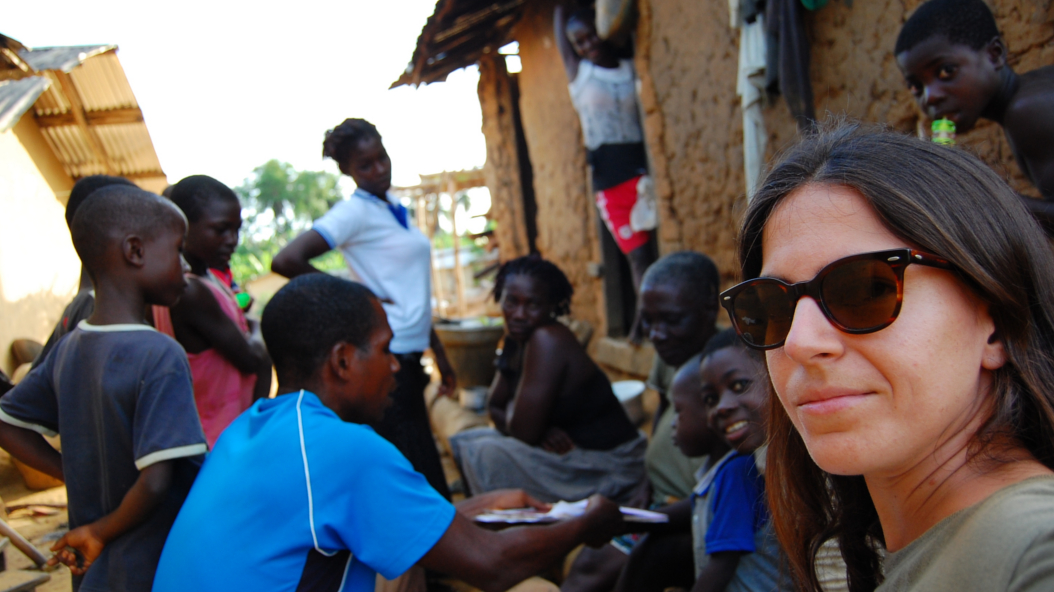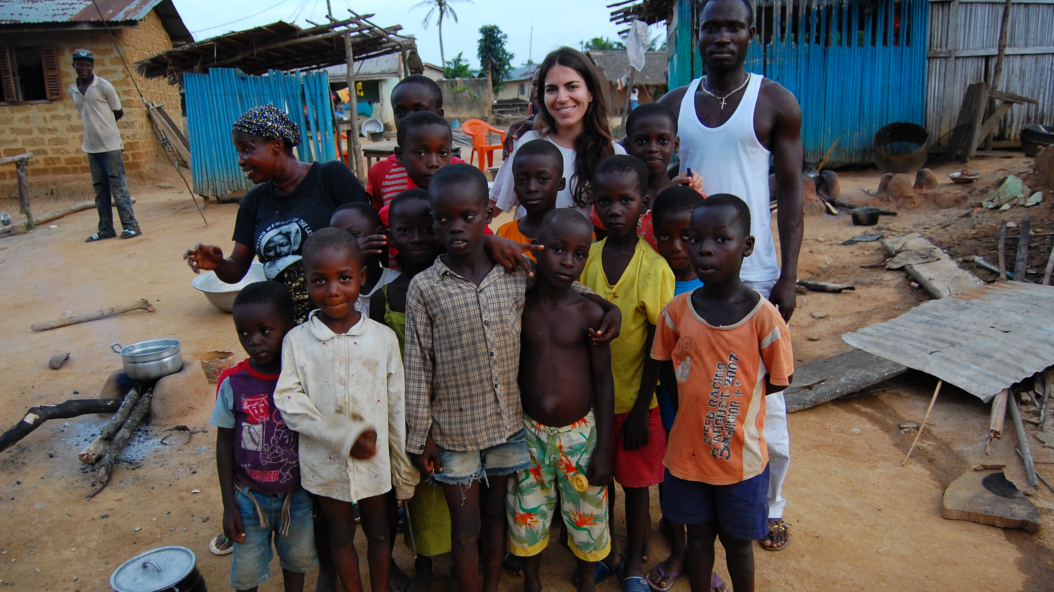On her trips to Ghana, primatologist Mercedes Mayo-Alesón asks the people who live in the settlements at the foot of the mountains where the white-naped mangabey lives: ‘What would happen if there weren’t any animals in the forest?’ Most of locals said nothing would happen. They are not aware of the impact that a tragedy like this could have. ‘When I explain it to them, they barely even believe me,’ she adds. Native communities may not know what would happen, but thousands of kilometres away from Ghana, despite knowing the answer, they don’t always act like they do.
Mercedes Mayo-Alesón is the head researcher of the mangabey conservation project, on which the Barcelona Zoo participates. This project especially centres on two endangered species that are in a worrying situation: The white-naped mangabey (Cercocebus lunulatus) and the Roloway monkey (Cercopithecus roloway).

A passion for animals
The young primatologist from Madrid speaks so passionately about the project’s recipients that she gives you the feeling that the first word she said when she started to speak was probably ‘primate’. She says that when she was little she did love all animals in general. She was hooked on documentaries on channel 2 and for Christmas they always gave her plush toys, while she asked for veterinary books she would read stretched out on her parents’ bed. She ended up knowing all dog breeds, saying ‘I identified them just with a glance’. However, she never had a dog. ‘Well, we had a holiday dog. It wasn’t mine, but our neighbours in Menorca where we spent summers. I used to walk around Milú every afternoon in the summer from the time I was six until I was 17.’ She also remembers the impact the film Gorillas in the Mist had on her (Michael Apted, 1988) on the life of Diane Fossey. ‘They no longer follow her working style, but to me she is an iconic personality.’
A career centred on primates
It wasn't however until university, where she was a student of social and cognitive aetiology in Psychology, that she discovered a whole new world that led her—under the guidance of Fernando Colmenares—to move to Barcelona to study a Master of Primatology. This was when she met Montse Colell and the project that linked her to the city zoo. Now, and she confirms it, she knows all the types of primates.
Indeed, owing to one of her lines of research, she could say she knows them so well that there will come a day when she can distinguish them all by their teeth. Especially if they belong in the mouth of a wild baboon or mandril. As a member of the project on human and primate evolution led by Alejandro Martínez Pérez-Pérez, and on which Jordi Galbany is also a researcher, the primatologist centred her studies on how dental wear is related to diet. ‘Teeth are what are most represented in fossil records. They are hard. It is astounding that we can end up knowing how to analyse them. When they say that a certain homo sapien had a diet based on something, they know it due to the teeth.’
From all angles and in all lands
At present, she combines her job as an associate professor in the Clinical Psychology and Psychobiology Department at the University of Barcelona with her work as coordinator of the mangabey project. The former lets her spend two or three months a year working in the field in Ghana. ‘We try to travel there in the dry season, but with climate change, everything is becoming blurred. It arrives later and is shorter every year, around March or April.’
She also works with the protection organisation Salva 1 Huella (Save One Paw Print) and undertakes actions related to animal conservation and protection. ‘With a group of people, we are trying to move forward a project at the zoo to attain visitors’ better interaction with the animals, with the aim of reducing their stress.'
The importance of knowledge and training to save the mangabey
Mayo-Alesón thinks that education is key for conserving animals and their ecosystems and that zoologists can play an extremely important role in this area. ‘What good will it do if we release white-naped mangabeys into their habitat tomorrow, if they are still illegally hunting them and deforestation is not stopped? We have to make the forests safe.’ For this reason, on her trips to Ghana, part of her fieldwork is focused on talking to the native communities. ‘It is extremely important to make them realise what they have around them and that they have to seek new ways of relating with wild animals.’ But she always spends a lot of time listening. ‘The people who know the most about the animals, the forests and flora are the locals. Sometimes we forget how valuable their knowledge is.’ And due to paying attention, the project team suspects the Miss Waldron’s red colobus may not be extinct, as people thought. ‘Different hunters, through photos that I showed them, assured me that they have seen this primate.’ Everybody, wherever they may be, must know the answer to ‘What would happen if one day there were no animals in the forest?’ and what their role is to prevent this.
Mercedes identifies and presents the mangabeys by name that currently live at the Barcelona Zoo and are part of the recovery project. You get the feeling that they also know her.




